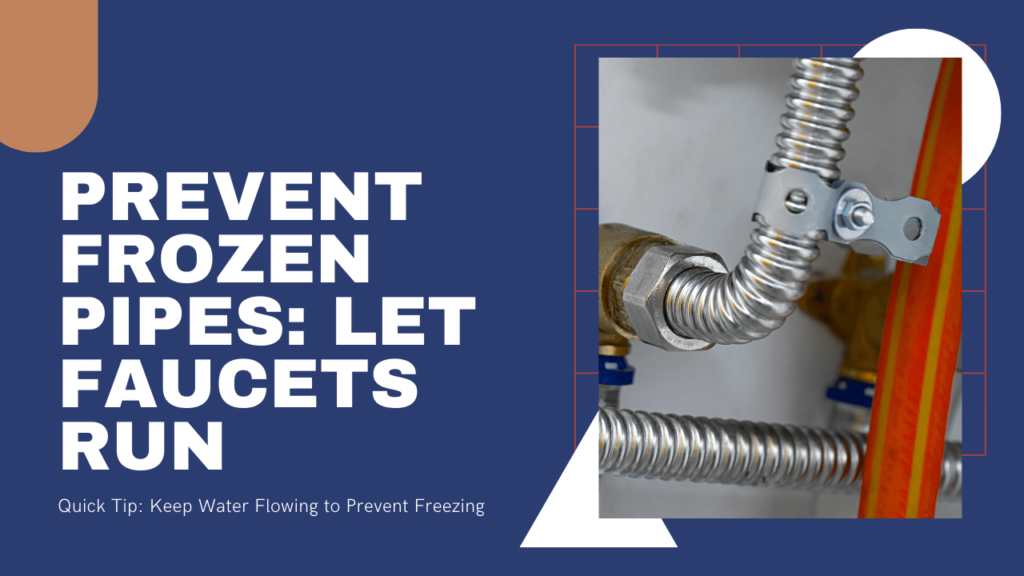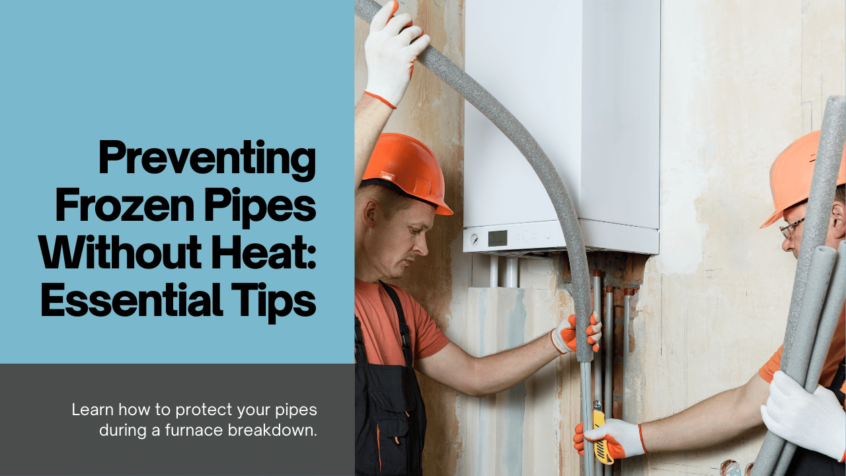Learn how to prepare your pipes and other parts before the winter comes in. Thermal insulation of pipes in the crawl spaces and attic would help protect them. Caulk any openings or cracks outside walls or foundations where there are water pipes. This does the same thing as preventing cold air from coming into contact with the pipes.
It may be helpful to purchase heat tape or heat cables to install directly onto the pipes. These electrical products are spiral in nature and embrace pipes to warm them and prevent freezing. Follow the correct way to install them to avoid any fire hazards.
Drain Pipes and Shut Off the Water
If you believe the heat will be off for several days, consider draining the water system. First, you have to close the main water supply pipe at the entry of your property. Then, open the faucets in different parts of the house to allow the draining of water from the pipes.

It is also important to drain pipes that pass through unpiped parts of the house, such as the attic, basement, and under the crawl space. It is recommended to remove standing water in the pipe using compressed air. Those with a low and a high faucet in the house should open both of them for ventilation.
Let Faucets Drip
In case you do not want to drain the whole plumbing system or if you are not in a position to do so, a simple drop of water may help in preventing the pipes from freezing. It would be good to keep the temperature inside pipes above 32°F to avoid freezing. Water is running on the floor to maintain the temperature slightly higher.
Leaving faucets open for a steady drip of one drop every second. It is also advisable to open both the hot and cold taps, ensuring that both supply lines are exposed to freezing temperatures alongside the cold ones.
Apply Heat Tape
For weak pipe locations such as outdoor hose bibs, install heat tape to generate an electric current that keeps pipes warm. You use this tape to wrap specially around the pipes. Heat tape plugged into the turn will provide enough heat for pipes to keep from freezing.
It is important to note that laboratory tested heat tape should be used and some types may be fire hazards. Read all instructions that the manufacturer gives concerning the proper application. Never let heat tape run over one another with opposing polarities, and never let it get wrapped in insulation.
Use Space Heaters Strategically
If space heating is unavailable and only central heat is available, use heaters to maintain these areas around pipes just above freezing. People who have pipes in their attics, basements, and crawl spaces must also ensure that these areas are adequately heated.
Avoid space heaters, especially if they are not monitored or allowed to run overnight. Put such things away from furniture and turn them off when people exit rooms. Use of space heaters should be discouraged as they burn gasoline or kerosene which is poisonous.
Let Indoor Faucets Run
It is possible to let faucets drip throughout the night in case the pipes are located in unheated indoor areas like attics ventilated ceiling areas or ventilated crawl spaces under houses. Trickling a little amount of water through pipelines ensures that the water in the pipes does not freeze completely.

Temperature in the crawl space or ceiling vents can cool up to freezing temperature while the rest of the house is warm. Any spaces running through refrigerated spaces must be safe with dripping indoor faucets. However, make sure that these areas are being monitored during cold weather.
Open Cabinet Doors
Plumbing stacks positioned on the house’s exterior in kitchens, baths and utility rooms are at risk. Open doors of cabinets under sinks to ensure more air circulates them.
Convection occurs when moving air helps to ensure that the temperature of the air around the pipes are slightly warmer. Styrofoam is also beneficial in the form of insulating sleeves that help to keep heat in the small sections of pipes. Consider availability of shutoff valves for water supply in the event of burst pipes.
Use a Portable Generator
If power outages become extensive then utilize a portable generator to power electric space heaters. It is always dangerous to operate fuel-powered generators in enclosed rooms because of the dangers of carbon monoxide poisoning. It is an energy efficient solution that can be used to target heat over fragile pipe areas.
You need to work hard and make adequate supply of generator fuel by checking it at every 6-8 hours. You should always read the instructions that come with the generator including safety instructions. The appliance is a potential fire and electric hazard if misused. In the event of a power outage, connect the individual space heaters to the generator.
Call in a Professional if Necessary
If you know you will not have heat for more than 48 hours, it is best to arrange for a plumber to come and blow out your pipes. They employ specific tools to stream compressed air, which pumps through pipes to rid water standing. Fire retardants may also be used as chemical antifreeze agents.
Winterization of an occupied house is not the optimum approach, though it is effective. But it buys you a few days if power and heat restoration notices keep being revised. Order a plumber to come before the pipes can freeze and burst.

